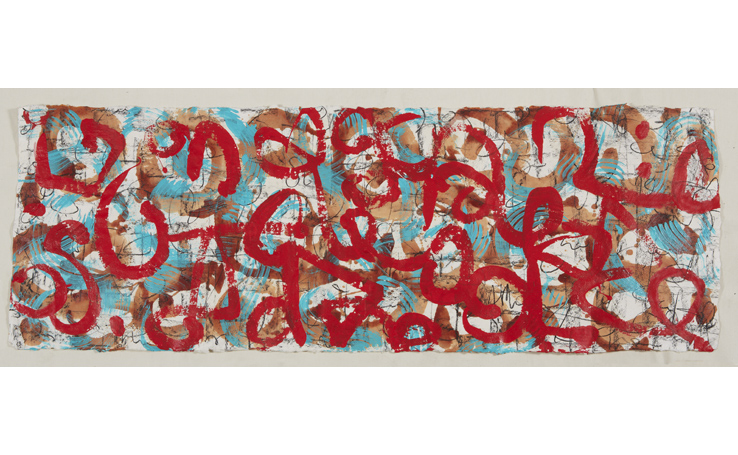Resum | Alex de Fluvià
May 7th 2013 to June 6th 2013
Evident in Alex de Fluvià’s work is the influence of the year he spent in Cairo, studying calligraphy. He focuses on form, rather than textual meaning, ultimately moving away from words and finding a rhythm akin to a physical mantra in the repetition of arabesque patterns, often using a pen or fine brush. These forms create a mesh-like layer between the viewer and the work, inspired by Arab wooden latticework mashrabiyas.
Overlayed on the arabesque forms are Japanese-inspired motifs achieved using a Shodo brush. The artist’s study of Shodo calligraphy in Tokyo are apparent in these massive strokes, again inspired by a different culture, yet executed in a highly personal style. Although the arabesque and Japanese motifs draw upon influences from travels abroad, one cannot help but notice their execution in a manner reminiscent of the graffiti that is ubiquitous in de Fluvià’s native Barcelona.
Intricate calligraphic patterns, coupled with bold gestural mark-making is characteristic of the artist’s oeuvre. He also frequently employs collage methods, as his powerful brushstrokes are often integrated with beautiful patterned papers, newspaper clippings, brightly colored fabrics and other quotidian elements which introduce an added dimension to the canvas. Each of Alex de Fluvià’s works act as markers, richly encapsulating and vividly expressing a period in the artist’s life.
Alex De Fluvià (1966) was born in Barcelona, Spain. He studied Art History at the University of Barcelona (1990) and photography at the School of Visual Arts, New York (2001). His work is a hybrid of cultural observations accumulated over his travels, juxtaposed with his deep Mediterranean roots. In his body of work, randomness, superimposition and the repetition of signs are intertwined to produce work with universal attributes. De Fluvià’s work has been exhibitedd in Germany, Netherlands, Italy, Japan, Korea, Mexico, Portugal, Spain, Switzerland, Egypt and the United Arab Emirates. His works are in significant public and private collections, including the Can Framis Museum (Fundació Vilacasas Barcelona).















